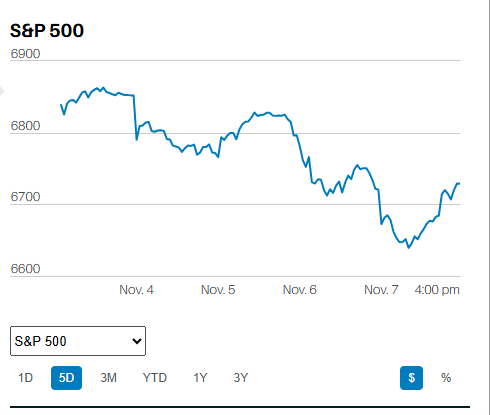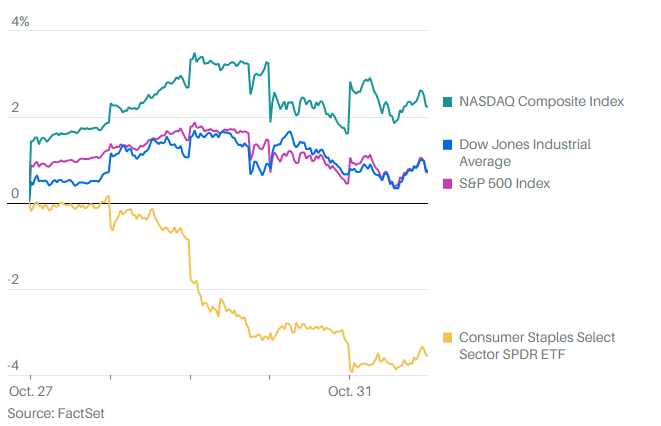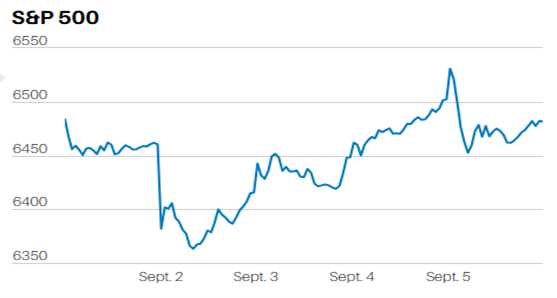Understand your Retirement Spending Goals

Market Update
The S&P 500 lost 0.2% last week. It lost 20.6% in the first half of 2022, its worst first six months of a year since 1970. The Nasdaq lost 29.5% in the first half of 2022, which was its worst first half ever. The Bloomberg U.S. Agg bond index (AGG) was down 10.7% in the first half. The bond market is in a nasty bear market of its own. The Vanguard Long-term Treasury ETF (VGLT) is down 20.02% on the year. Super safe U.S. Treasuries haven't been very safe.
We wrote last week to, “Expect more upside testing early this week. Also, expect the bear market rally to fizzle out by the weekend. A sell-off Friday heading into the 4th of July weekend wouldn’t be a surprise at all.” The S&P ran out of steam Tuesday morning, peaking for the week at 3945.86. The index bottomed Thursday rather than continuing down though. A rebound into the close Friday leaves the near-term direction in doubt.
We may see another attempt at the 3945.86 high following the 4th of July weekend. An advance past 3945.86 clears the way for a test of resistance at 4177. It’s also possible we’ll see selling that takes us down for a test of the 3636.87 June 17th low. A break below 3636.87 would confirm the long-term downtrend. Stock markets are leading indicators. A drop below 3636.87 would mean we should expect weaker than forecast earnings in the next few quarters.
The long-term trend remains down.
Economic Indicators
The Conference Board’s consumer confidence gauge fell to 98.7 in June from 103.2 the prior month. The gauge’s expected business conditions were the weakest since 2009. The average expected inflation rate rose half a percent to 8.0%, which is the highest in the survey’s 35-year history. A measure of consumer confidence that looks six months ahead fell to 66.4 from 73.7. Consumers pointed to high inflation and talk of recession as the main reasons for their loss of confidence.
Core PCE inflation fell to 4.7% year over year in May down from 4.9% the prior month. The Fed is expected to continue raising rates with another 0.75% hike in July. Fed officials are expecting inflation to remain above their 2% target through 2024. All of which means the Fed should be expected to keep hiking the Federal Funds rate well into next year. Yet the two-year Treasury note yield slid to 2.83% last week. It is 0.60% below its mid-June peak of 3.43%. The 10-year yield fell to 2.88%, well below its peak of 3.5% in mid-June. The bond market is starting to price in rate cuts in 2023.
The Atlanta Fed’s GDPNow estimate for Q2 GDP fell to negative 2.1% on Friday, which helps explain the decline in interest rates. There is an increasing chance that the Fed will pause with its interest rate hikes by the fall. The FOMC could even start signaling impending cuts by early next year.
Why We Invest
We save and invest so that we can consume in retirement. We are forgoing current consumption for future consumption. Financial planning is partly about ensuring we have assets to meet our future liabilities. Spending goals are future liabilities. Savings rates, spending goals, and asset allocations interact with one another. Save more and you can spend more in retirement. Earn more on your investments and you can save less and still meet your spending goals. The more conservative you are in your investing the more you’ll need to save to achieve the same spending goals.
Likewise, wealth creation is about good capital allocation. Pre-paying your 3.5% 30-year fixed mortgage is a mistake if you can earn 7% to 8% in a diversified portfolio. Pre-paying your 6.5% student loan makes sense though. Pre-paying 6.5% debt is the same as earning 6.5% and it’s guaranteed. Maybe you can make 7% to 8% over the business cycle but maybe not. That uncertainty should be considered when determining how to allocate your capital.
The point is that you don’t invest in a vacuum, at least you shouldn’t. It is important to remember what you’re trying to do with your saving and investing. You want to earn the highest rate of return available while maintaining enough liquidity to meet spending goals. Liquidity is important as spending goals near. Most people can be mostly in stocks most of their working years. Shifting assets to less volatile investments should be done as major spending goals near. Stay in stocks if you’re five-plus years away from a major spending goal. Don't worry about volatility until spending goals approach. Raise cash for spending goals a year or two in advance. Otherwise allocate to the highest risk-adjusted returns.
Stocks are ownership in businesses. The American economy will grow 2% annually in real terms over the long run. Profits will grow accordingly, and the stock market will go higher as a result. It’s been a terrible first half for investors, but if you don’t have major spending goals looming you shouldn’t be worried at all. Instead, you should be thinking about buying more profitable businesses both in the U.S. and abroad.
Regards,
Christopher R Norwood, CFA
Chief Market Strategist











